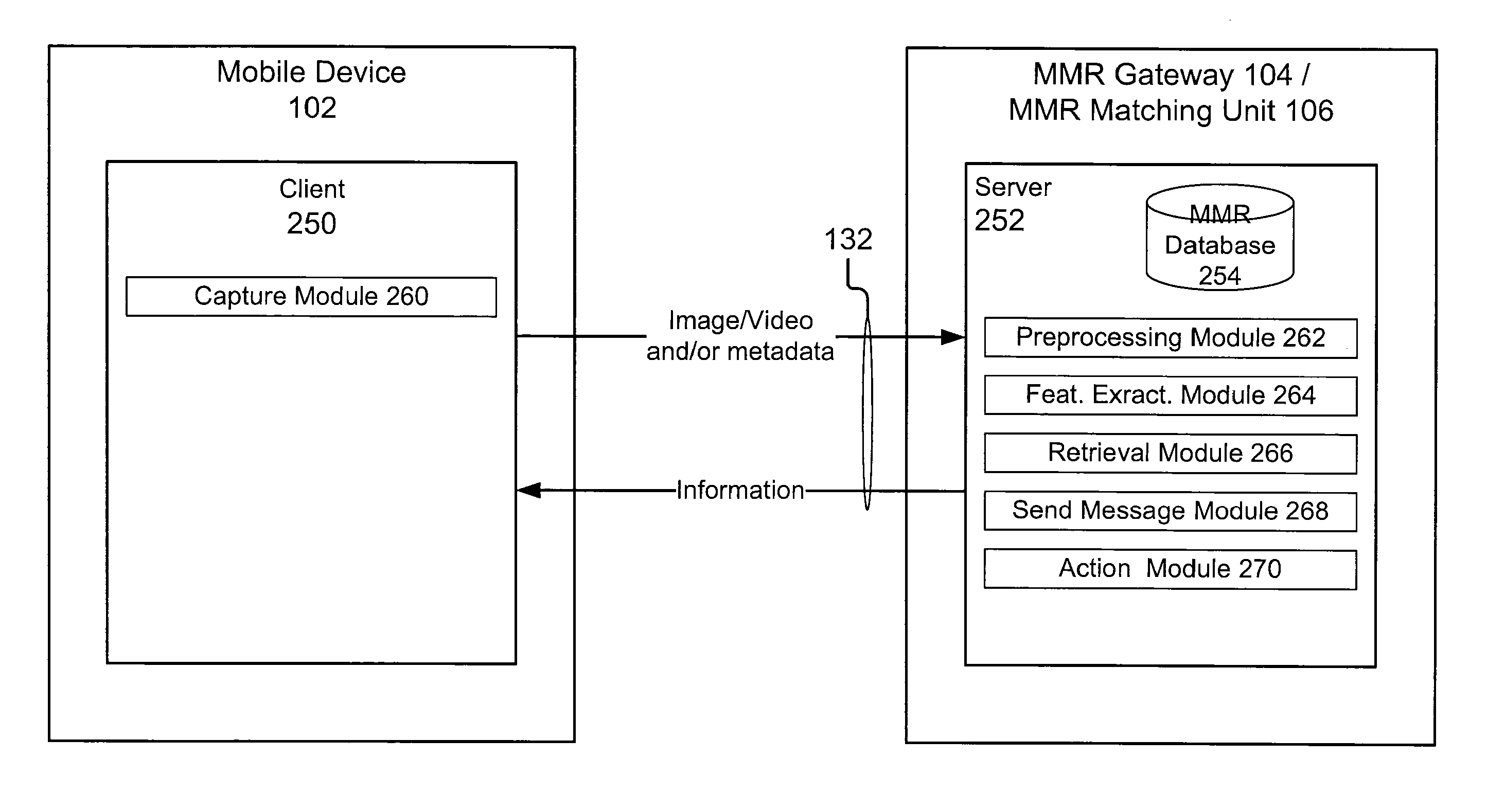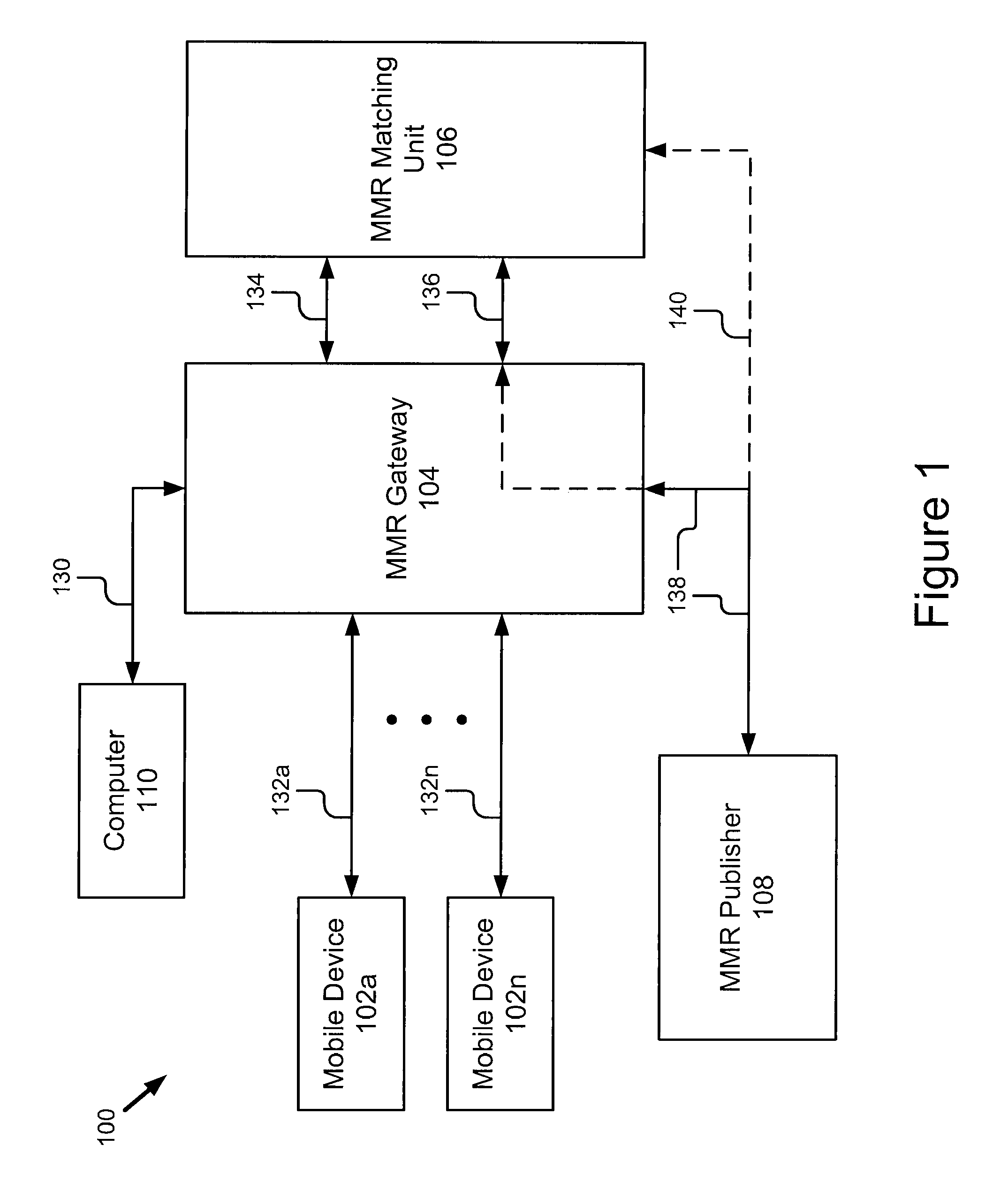Architecture for mixed media reality retrieval of locations and registration of images
a technology of mixed media and location retrieval, applied in the field of mixed media document creation, can solve the problems of insufficient tools and technology for forming a link between the two, the gap between the electronic multimedia-based world accessible electronically and the physical world of print media, and the inability of users of printed media and personal electronic devices to possess the tools and technology required to bridge the gap between static printed media
- Summary
- Abstract
- Description
- Claims
- Application Information
AI Technical Summary
Benefits of technology
Problems solved by technology
Method used
Image
Examples
second embodiment
[0059]Referring now to FIGS. 2A and 2B, the first and second embodiment for the mobile device 102 will be described.
first embodiment
[0060]FIG. 2A shows the coupling 132 between the mobile device 102 and the MMR gateway 104. In this embodiment, the mobile device 102 is any mobile phone (or other portable computing device with communication capability) that includes a camera. For example, the mobile device 102 may be a smart phone such as the Blackberry® manufactured and sold by Research In Motion. The mobile device 102 is adapted for wireless communication with the network 202 by a communication channel 230. The network 202 is a conventional type such as a cellular network maintained by wireless carrier and may include a server. In this embodiment, the mobile device 102 captures an image and sends the image to the network 202 over communications channel 230 such as by using a multimedia messaging service (MMS). The network 202 can also use the communication channel 230 to return results such as using MMS or using a short message service (SMS). As illustrated, the network 202 is in turn coupled to the MMR gateway ...
PUM
 Login to View More
Login to View More Abstract
Description
Claims
Application Information
 Login to View More
Login to View More - R&D
- Intellectual Property
- Life Sciences
- Materials
- Tech Scout
- Unparalleled Data Quality
- Higher Quality Content
- 60% Fewer Hallucinations
Browse by: Latest US Patents, China's latest patents, Technical Efficacy Thesaurus, Application Domain, Technology Topic, Popular Technical Reports.
© 2025 PatSnap. All rights reserved.Legal|Privacy policy|Modern Slavery Act Transparency Statement|Sitemap|About US| Contact US: help@patsnap.com



